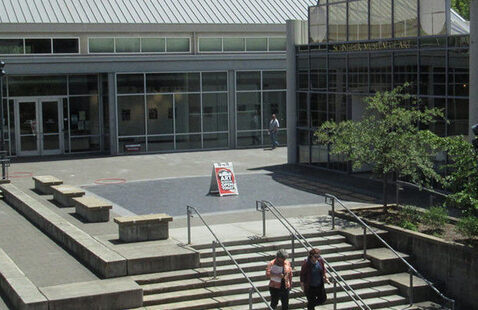Southern Oregon University Siskiyou enthusiast Megan Zeimer highlights some of her favorite stories from Siskiyou’s past
How many black faculty members have you seen at Southern Oregon State College lately? None. But why?
Over the last 10 years at SOSC, there have been no full-time black professors and only two black administrators. The most recent black faculty member was part-time professor, Doug Massey. He worked at Jefferson Public Radio in late 1990 and left a year later for another job.
According to Stephen Reno, provost and dean of faculty, the answer is very simple yet complex for SOSC not having black staff or faculty members.
“the simple part is that we don’t get very many black applicants … the complex part is I don’t know why for the most part,” Reno said.
The black population in the Rogue Valley is very small. The college also has little history of black professors. Reno said this may have some impact on the amount of blacks applying for a position here. They probably want to go to a town and college with a history of their race being employed there.
“The reality is there are not enough black applicants for all the positions offered at all the colleges around the nation. SOSC also is not financially competitive with other colleges,” Reno said. “They pay better wages.”
Each applicant has to go through a strict process before the hiring committee. The committee consists of faculty members of the department in which the applicant is applying, the dean of the department and the affirmative action officer.
According to Linda Sindt, Affirmative Action Officer and assistant to the dean of administration and finance, the applicants must meet the qualifications of the department. Something new that the committees are looking for is a multicultural background.
One policy that was outlined in a memorandum given by Joseph Cox, president of SOSC, stated: “A heterogeneous faculty providing diverse talents and points of view increases the effectiveness and vitality of the department, as well as the stature and prestige of SOSC. A heterogeneous faculty is one that includes women as well as members of various minority and targeted groups.”
There are many other policies that the committee must follow so that they do not discriminate against anyone. After these people have made their choice as to who is most qualified for the position, the decision is approved by Reno who hires the new member.
According to Sindt, the minority students have requested more minority faculty members.
“Students want someone to relate with to feel more comfortable.” Sindt said.


